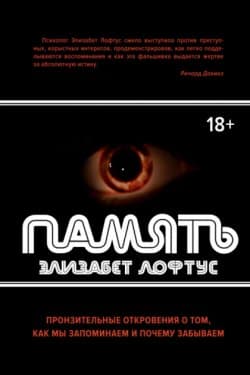Больная любовь - Джесс Хилл (2021)
-
Год:2021
-
Название:Больная любовь
-
Автор:
-
Жанр:
-
Язык:Русский
-
Страниц:298
-
Рейтинг:
-
Ваша оценка:
Мы опасаемся темных переулков, хотя, согласно статистике, самым опасным для женщины местом является дом. В 2017 году в мире было зарегистрировано 87000 убийств женщин, треть из них совершены сексуальными партнерами, а в 20000 случаев убийцей оказался тот или иной родственник. В России примерно 40 % убийств женщин совершает партнер. Известная журналистка в этой мастерски написанной работе исследует проблему домашнего насилия. Автор смело отвечает на неудобные вопросы, как и почему общество создает насильников, почему не в состоянии защитить жертв, демонстрирует ошибочную логику жертв, бросает вызов всему, что вам было известно о эмоциональном и физическом насилии. Джесс Хилл приводит реальные истории пострадавших и показывает, как решить эту проблему.
Больная любовь - Джесс Хилл читать онлайн бесплатно полную версию книги
17. Terence Mickey, ‘#13 The Ideal Hostage’, Memory Motel (podcast), 6 December 2016.
18. Wade, ‘Rethinking Stockholm Syndrome’.
19. Ibid.
20. M. Namnyak, et al., ‘«Stockholm syndrome»: Psychiatric diagnosis or urban myth?’ Acta Psychiatrica Scandinavica, 2008, 117, pp. 4–11.
21. Wade, ‘Rethinking Stockholm Syndrome’.
22. Courtney Michelle Klein, ‘Combating intimate partner violence through policing innovations: Examining High Point, North Carolina’s offender focused domestic violence initiative’, John Jay College of Criminal Justice, City University of New York, 2014.
23. Paula Reavey & Sam Warner, New Feminist Stories of Child Sexual Abuse: Sexual scripts and dangerous dialogues, Psychology Press, 2003.
24. E. W. Gondolf & E. R. Fisher, ‘Battered women as survivors: An alternative to treating learned helplessness’, Lexington, MA, England: Lexington Books/D.C. Heath and Com, 1988.
25. Lee H. Bowker & Lorie Maurer, ‘The medical treatment of battered wives’, Women & Health, 1987, 12, pp. 25–45.
26. Linda Gordon, Heroes of Their Own Lives: The politics and history of family violence, Boston, New York: Viking, 1988.
27. Biderman, Communist Patterns of Coercive Interrogation.
28. Kirkwood, L eaving Abusive Partners, p. 61.
29. Leslie Morgan Steiner, ‘Why domestic violence victims don’t leave’, TEDxRainier, November 2012.
30. Ibid.
31. Kathleen J. Ferraro & John M. Johnson, ‘How women experience battering: The process of victimization’, Social Problems, 1983, 30(3), pp. 325–39.
32. Ali Owens, ‘Why we stay: A deeper look at domestic abuse’, The Huffington Post, 6 June 2016.
33. Investigation by ABC News, edited by Julia Baird and Hayley Gleeson, into religion and domestic violence, 2017–2018.
34. Herman, Trauma and Recovery, p. 87.
35. Leigh Goodmark, ‘When is a battered woman not a battered woman? When she fights back’, Yale Journal of Law & Feminism, 2008, 20(1), pp. 75–129.
36. Australian Bureau of Statistics, ‘People in Australia Who Were Born in Afghanistan’, 2016 Census QuickStats Country of Birth.
37. Manpreet K. Singh, ‘Indian women are the largest migrant group in Australia to call family violence helpline’, SBS Punjabi, 7 February 2017.
38. Francis Bloch and Vijayendra Rao, ‘Terror as a bargaining instrument: A case study of dowry violence in rural India’, The American Economic Review, 2002, 92(4), pp. 1029–43.
39. Sylvia Walby & Jonathan Allen, ‘Domestic violence, sexual assault and stalking: Findings from the British Crime Survey’, Study 276, 2004.
40. Jennifer Nixon & Cathy Humphreys, ‘Marshalling the evidence: Using intersectionality in the domestic violence frame’, Social Politics: International Studies in Gender, State and Society, 2010, 17(2), pp. 137–58.
41. Melissa Lucashenko, ‘Sinking below sight: Down and out in Brisbane and Logan’, Griffith REVIEW, 2013, 41, pp. 53–67.
42. SBS World News, ‘Cost of fleeing violent relationship is $18,000 and 141 hours, ACTU’, SBS News (online), 13 November 2017.
43. P. Cameron, Relationship Problems and Money: Women talk about financial abuse, WIRE Women’s Information, 26 August 2014.
44. Ibid.
45. Ibid.
Глава 3. Психика абьюзера
1. Heather Douglas & Tanja Stark, Stories from Survivors: Domestic violence and criminal justice interventions, T. C. Beirne School of Law, The University of Queensland, 2010.
2. John Gottman and Neil Jacobson, When Men Batter Women: New insights into ending abusive relationships, Simon & Schuster, 1998.
3. Ibid., p. 89.
4. Ibid., pp. 90, 92.
5. Ibid., p. 74.
6. Ibid., pp. 114–16.
7. Ibid., p. 110.
8. Ibid., pp. 93–6.
9. Ibid., p. 86.
10. Ibid., p. 90.
11. Ibid., p. 93.
12. Ibid., p. 38.
13. Ibid., p. 30.

 Память
Память  Почему
Почему  Манящая любовь
Манящая любовь  Чудовище и красавица
Чудовище и красавица  Любовь к себе. Теория и практика
Любовь к себе. Теория и практика  При чем здесь любовь?
При чем здесь любовь?  Пир теней
Пир теней  Князь во все времена
Князь во все времена  Когда порвется нить
Когда порвется нить  Пока я здесь
Пока я здесь 



